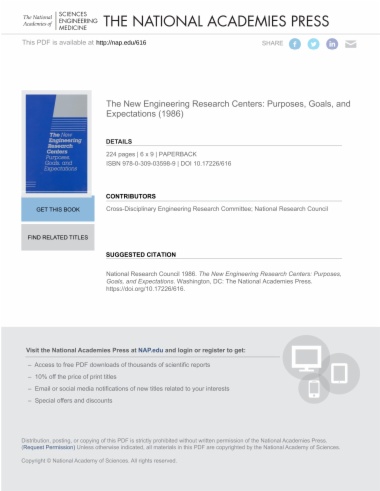

Within the past decade, six Engineering Research Centers opened on university campuses across the United States. This book reviews the lessons learned as the centers got under way, and examines the interrelationship among universities, government, industry, and the research establishment. Leaders from business, government, and universities discuss in this volume the challenges now facing American industry; the roots and early development of the research center concept; the criteria used in selecting the six centers; the structure and research agenda of each center; the projected impact of the centers on competitiveness of U.S. technology; and the potential for further research in biotechnology, electronics, robotics, and related areas.